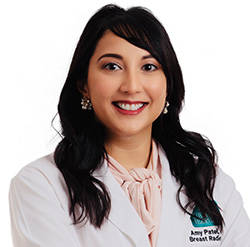Amy K. Patel, MD, breast radiologist, Alliance Radiology, medical director, Liberty Hospital Women’s Imaging, assistant professor of radiology, University of Missouri-Kansas City School of Medicine, contributed this post.
At the Society of Breast Imaging Annual Meeting this year, breast radiologist expert Michael Linver, MD, FACR poignantly said something which I’ll never forget. We were discussing the topic in the general session about screening patients globally and the disparities that exist. He said, “Although these women do deserve access to mammography screening, what about women in our country who need access such as rural women? We need to be focusing on these women first.”
In many respects, I’ve made improving rural breast health my life mission. I’ve always been a staunch advocate for screening mammography and access, from lobbying on Capitol Hill to challenge U.S. Preventive Services Task Force (USPSTF) recommendations to helping craft legislation to ensure 2D and 3D mammography coverage for women beginning at age 40, to speaking at women’s health events, radio ads, television interviews and public events. In fact, I use social media as a means to disseminate critical screening information to a wide spread of rural patients.
The facts are startling, and frankly disappointing, in the state of Missouri. A study of 28, 536 cases of female breast cancer from 2003-2008 reported to the Missouri Cancer Registry and Research Center demonstrated that women diagnosed with breast cancer living in rural areas, regardless of race, with limited access to care, were more likely to be diagnosed with late-stage breast cancer, with the proportion greatest in African American women (66.7%)(1).
Unfortunately, this is not just exclusive to Missouri, as many states’ rural populations face similar disparities.
I fervently believe we need to take it one step further by committing to improving the quality of care in disparate areas. We need to provide support to technologists at these rural hospitals, from educating the technologists ourselves to ensuring they receive the state-of-the-art equipment they need to advocate support for hospital funding for refresher courses, yearly positioning training and more. These are critical ways which will contribute to closing the gap to health care disparities and improving imaging and access in this country.
As a breast imaging community, it’s simply our duty that we reach these communities and make a concerted effort to close the gap to breast care disparities. We must mobilize and make this population a steadfast priority, regardless of geographic location.
References:
1. Williams F, et al. Rural-urban difference in female breast cancer diagnosis in Missouri. Rural Remote Health. 2015 Jul-Sep; 15(3):3063.
Please share your thoughts in the comments section below, and join the discussion on Engage (login required).

categories
Leave a Comment
